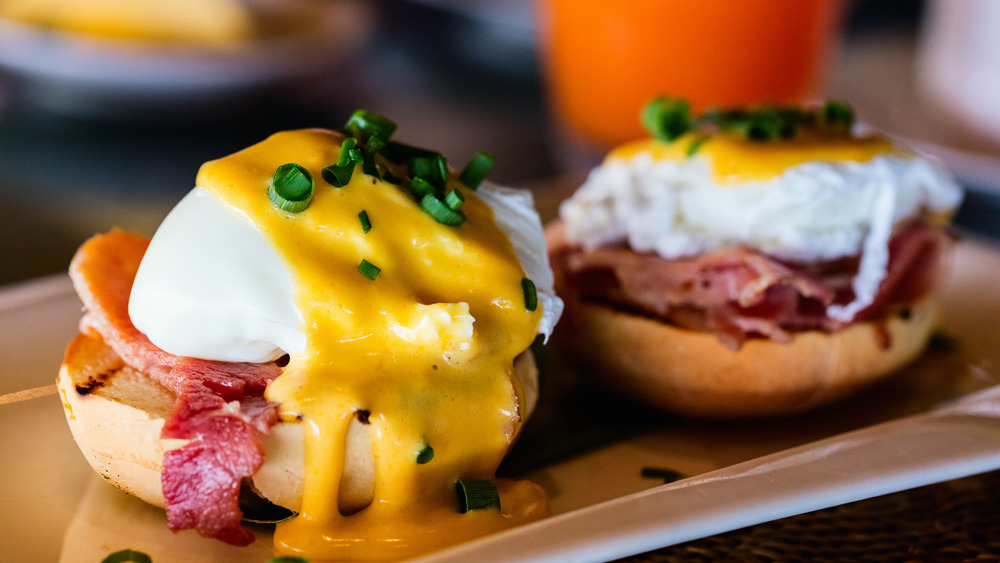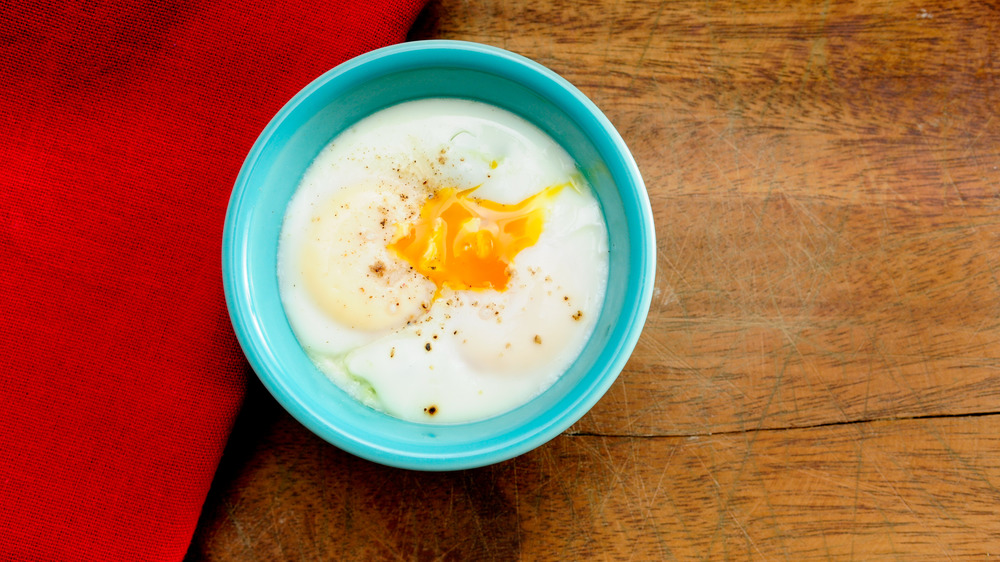The Real Difference Between A Coddled Egg And Poached Egg
There's so much you can do with an egg. You can fry it, boil it, and scramble it, of course, but with a little extra effort, you can turn your bland breakfast into a gourmet experience.
After all, a scrambled egg on toast is comfort food, but a poached egg on toast is just an avocado and a little Sriracha away from an Instagram-worthy meal. Plus, it's not hard to poach an egg, once you get the hang of it. The most important step is straining the egg through a fine mesh strainer to separate the thinner part of the white from the rest of the egg. This will keep the shape of the egg more uniform and give you a more consistent poached egg result, even without the use of vinegar in your boiling water (via The Kitchn). The final step is to slip the strained egg into simmering water and let it cook for about four minutes (adding 30 seconds of cook time for each additional egg).
Coddling, on the other hand, is done by cracking an egg into a small dish or ramekin and placing that dish in the simmering water (via The Spruce Eats). Because the water never touches the egg, it's cooked much more slowly than a poached egg, usually for about six to 10 minutes, and as a result, the egg will have a very soft texture.
When to coddle, and when to poach your eggs
While both a coddled and a poached egg will give you a gooey yolk to dip your food in, they're definitely not interchangeable. A poached egg will make a fantastic finishing touch to almost any dish; from salads and grain bowls to fancier fare like carbonara (via Spoon University). They can even be the star of the show, like in Shakshuka, a simple but super-flavorful one-pan meal made of tomatoes, peppers, with eggs poached right in the sauce (via Chowhound).
Coddled eggs, meanwhile, don't hold their shape and thus won't typically add any presentation points to your preparation. Instead, let your coddled eggs be the star of the show. Their soft, creamy texture makes them the ideal dip for your toast soldiers in the morning, and they're even better when combined with comforting flavors like ham, cheese, chives, and butter (via Bon Appétit).

